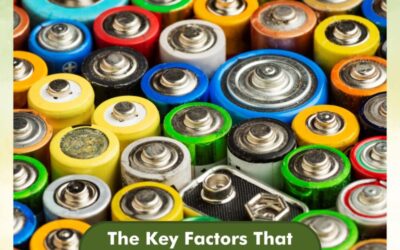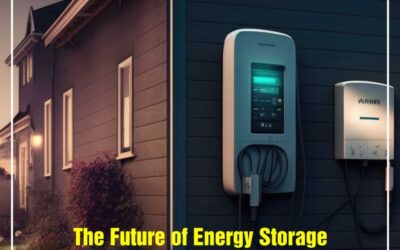
Explore the concept of “deep discharge,” its detrimental impact on lithium-ion and lead-acid batteries, and how the same process in sodium-ion batteries will usher in a new era of sustainable energy storage.
Sodium-ion batteries have emerged as THE frontrunner in the race to find sustainable energy sources, courtesy of the abundance of sodium and, the environment-friendly extraction. Couple that with an outstanding lifecycle, recycling, and safe disposal, and the fact that it is more cost-efficient while being similar in terms of energy efficiency to lithium-ion batteries, sodium-ion batteries are set to bring upon an energy revolution we all desperately need.
Deep Discharge is one of the primary attributes of sodium ion batteries whose significance cannot be overstated, as it is the core reason why they are highly suited for grid storage systems and solar lights. In this blog, we will take a comprehensive look into the process of deep discharge and how the widespread adoption of Indi Energy’s sodium-ion batteries and customized sodium-ion battery packs will further the cause of renewable energy sources.
What is deep discharge in batteries?
Deep discharging, also known as over-discharging, occurs when batteries are drained to their full capacity or a level below their safe operating limits. The process of discharging a large amount of energy quickly, intentionally or accidentally, is characteristic of deep discharge, which can potentially destroy the battery itself.
What are the downsides of deep discharge in lithium-ion and lead-acid batteries?
Deep discharging is one of the leading reasons for the formation of dendrites, which are metal projections or needle-like structures that grow on the surface of the anode in batteries. When these dendrites grow long enough, they bridge the gap between the anode and cathode, causing a short circuit and leading to a fire or explosion.

Deep discharge is inherently problematic for lithium-ion and lead-acid batteries. In lithium-ion batteries, dendrites build up on the lithium surface and penetrate the separator, crossing from one electrode to the other and shorting out the battery cell. Whereas, lead-acid batteries, which consist of lead plates immersed in an electrolyte solution, there’s a potential issue when these batteries are deeply discharged. During this process, the lead plates react with the electrolyte and produce a substance called lead sulfate. This lead sulfate builds up on the plates over time, forming tiny structures called dendrites. Unfortunately, these dendrites can lead to serious problems like short circuits, fires, or even explosions.
Another thing to keep in mind is that lithium-ion batteries in your portable devices have a limited number of charge-discharge cycles before their capacity starts degrading. Deep discharges accelerate this process and decrease the overall lifespan of batteries. Repeated deep discharges lead to a gradual reduction in the battery’s capacity, meaning it holds less and less charge over time.
It is also the main culprit for increased internal resistance within the batteries, along with a severe risk of a drop in its voltage that damages electronic components, leading to malfunctions and failures and safety concerns such as the battery becoming unstable or overheating. In extreme cases, deep discharges lead to battery swelling, leakages, and even rupturing. This is why manufacturers provide instructions for charging and discharging lithium-ion and lead-acid batteries.
The process of “deep discharge” is detrimental to contemporaries’ energy storages, yet that is not the case with sodium-ion battery technology.
Why does deep discharge not affect Sodium-ion batteries?
Sodium ion batteries are less prone to dendrite formation compared to lithium-ion and lead-acid batteries. This is because sodium ions are larger. This larger size results in more stable electrode materials and less significant structural changes when the battery is charged and discharged.
Sodium-ion batteries also use different electrode materials than lithium-ion batteries. Take Indi Energy’s sodium-ion batteries, which use a proprietary liquid sodium-ion electrolyte that is stable and enables the flow of electrical current between the Hard Carbon anode, BioBlackTM, and the indigenously developed sodium-ion cathode. Not only does it offer higher ionic conductivity, faster diffusion, and higher power output but also rapid charging times, low volatility, and enhanced solubility for sodium salts.
And we can’t leave out the operating voltage of sodium-ion batteries, which is also crucial to the lack of dendrite formation. The operating voltage of a sodium-ion battery is typically 2.3–2.5 V, which is lower than that of lithium-ion batteries (3–3.7 V), ensuring that the sodium ions do not get stuck in the electrolyte and form dendrites.
On the other hand, lead-acid batteries’ operating voltage is lower than that of sodium-ion batteries. The optimal voltage of lead-acid batteries is 2.1 V, but because the lead ions are smaller than the sodium ions, they are more likely to diffuse through the electrolyte and form dendrites. And of course, the process of “sulfation” is still there, which we already discussed under the downsides of deep discharge.
Translating deep discharge into tangible benefits for the world
Indi Energy, an energy storage startup from India, is involved in the development and commercialization of sodium-ion batteries and their components, such as hard carbon – BioBlackTM, sodium-ion cathode, sodium-ion electrolyte, etc., and is ushering in a new era of energy solutions for the energy grid, which is evolving into a smarter, more agile network that seamlessly accommodates our ever-evolving energy needs.
We are promoting the integration of renewable energy sources like solar and wind with sodium-ion battery-powered grid storage systems that are capable of deep discharges without compromising efficiency or cycle time.
Be it solar street lights or ambitious smart city projects, we are facilitating the reality of storing more electricity in a smaller footprint while keeping down overall costs and achieving remarkable reliability and sustained performance even in the harshest of conditions.
The ability to discharge large amounts of energy quickly is crucial for grid storage systems, enabling them to provide backup power during outages. Indi Energy’s customized sodium-ion battery packs also help in managing renewable energy variability by storing excess during periods of abundance and discharging when production is low, ensuring a consistent supply of power is available, and improving overall grid efficiency by discharging stored energy during peak demand hours.

Indi Energy’s sodium-ion batteries perfectly complement solar lights, a cornerstone of sustainable outdoor lighting solutions, because they can be deeply discharged to efficiently power solar lights throughout the night, maintaining brightness and functionality without compromising battery life.
Indi Energy’s sincere appeal
As the energy landscape undergoes a profound transformation, sodium-ion batteries have emerged as an embodiment of innovation, progress, efficiency, and environmental responsibility. We at Indi Energy are extending a sincere and impassioned appeal to governments, organizations, and consumers worldwide, including India, to embrace sodium-ion technology wholeheartedly for renewable energy storage, and by doing so, we can all give our collective carbon emission reduction goals a boost.
We are all at a crossroads today. Each step that we take has to be towards a future where our footprints echo softly upon the earth, reminding us about the legacy we have left for generations to come.
Join us, and let’s walk down this road together.






